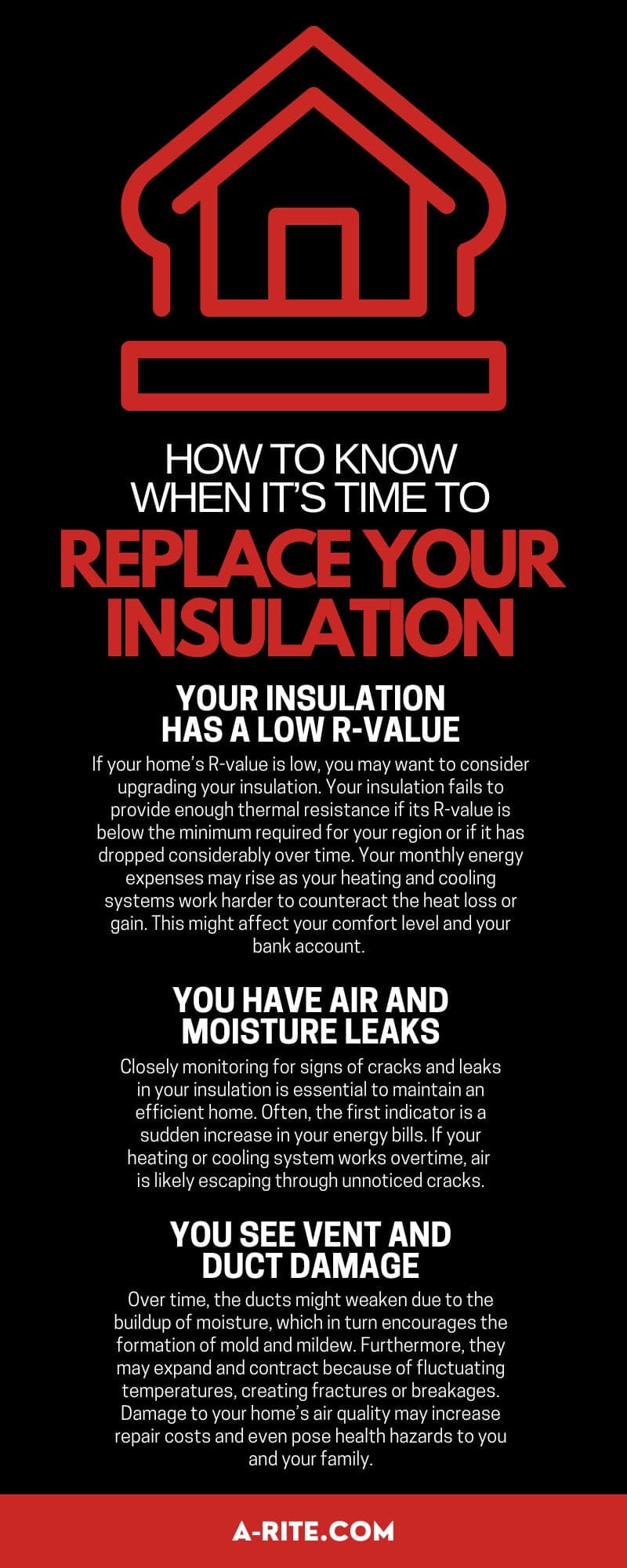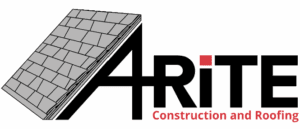Insulation is like a good official in a football game. It stays out of sight but never out of duty. It’s not as thrilling as a new coat of paint or as noticeable as a fancy chandelier, yet it tirelessly keeps you warm in winter and cool in summer. But when the lifetime of insulation is over, you need to change it. Learn about how to know when it’s time to replace your insulation here.
Your Insulation Has a Low R-Value
Numbers rule the world, particularly if that number determines precisely what’s going on. Your home’s insulation has an important figure called an R-value. This number measures thermal resistance that plays a pivotal role in home insulation. It quantifies the effectiveness of insulating materials in resisting heat flow, thereby significantly maintaining your home’s comfort and energy efficiency.
Higher R-values denote superior insulation performance, implying that the material effectively impedes heat flow, keeping your home warmer in winter and cooler in summer. This rating is particularly vital when choosing insulation materials. For instance, an insulation material with an R-value of 30 is more heat resistant than one with an R-value of 15.
If your home’s R-value is low, you may want to consider upgrading your insulation. Your insulation fails to provide enough thermal resistance if its R-value is below the minimum required for your region or if it has dropped considerably over time. Your monthly energy expenses may rise as your heating and cooling systems work harder to counteract the heat loss or gain. This might affect your comfort level and your bank account. A low R-value indicates it’s time to improve or replace your insulation.
Fully grasping the R-value of your home’s insulation provides a crucial insight into its efficiency, potential energy savings, and overall comfort. It’s a critical number hidden within the walls and attics of your home, silently contributing to your comfort and well-being.
You Have Air and Moisture Leaks
Closely monitoring for signs of cracks and leaks in your insulation is essential to maintain an efficient home. Often, the first indicator is a sudden increase in your energy bills. If your heating or cooling system works overtime, air is likely escaping through unnoticed cracks.
You may also find that the temperature varies significantly from room to room. Stains on the walls might indicate improper installation or decaying insulation. The discoloration on your walls is likely due to the insulation materials soaking up moisture via the crevices.
Additionally, hearing strange noises, such as whistling around windows or doors, could indicate sealing issues. Don’t ignore a musty odor, either. This kind of smell can indicate the presence of leaks that have allowed moisture to become trapped in the insulation. A word of caution—neglecting insulation might seem harmless at first, but it could lead to moisture buildup like this over time. Beneath the surface, moisture is a silent invader, creeping into the insulation, dampening its effectiveness, and paving the way for mold growth. For the sake of your family’s comfort and your bank account, it’s in everyone’s best interest to take care of these issues as soon as possible.
You See Vent and Duct Damage
Vents and ducts may suffer damage from inadequate insulation. Overworking your HVAC system is a sure sign of inadequate or damaged insulation, which allows for the undesired passage of heat. Over time, the ducts might weaken due to the buildup of moisture, which in turn encourages the formation of mold and mildew. Furthermore, they may expand and contract because of fluctuating temperatures, creating fractures or breakages. Damage to your home’s air quality may increase repair costs and even pose health hazards to you and your family. Therefore, keeping up with insulation maintenance is important for your house’s health and your ducts’ and vents’ longevity.
You Notice Birds Living in Your Home
It might sound peculiar, but birds’ sweet chirping can serve as a surprising indicator of insulation issues in your home. Birds, particularly smaller species, often look for tiny openings and crevices in homes’ exteriors to build their nests and provide a shelter for their offspring.
Suppose you start noticing a concert of chirps, particularly from your attic or walls. That’s a sign that these feathered friends might have found a way into your home, exploiting cracks and gaps that have emerged due to aging or damaged insulation.
During the winter, when the weather is bad, birds will look for any place to take cover from the elements. Their presence reveals insulation flaws and may worsen the problem by dislodging insulation with their nesting materials. This allows even more warm air to escape. So, if you hear birds in your attic or walls, don’t do nothing. It’s probably time to have an expert look at your insulation.
The Hidden Costs of Neglecting Insulation
What can you expect on your energy bill if these issues are present? How much more will you spend on energy if your home’s insulation is subpar? This can be tricky to answer, as it can vary based on many factors, such as your home’s size, the specific type of insulation used, and the severity of the insulation problem.
Poor insulation, however, may cause an increase in utility costs of 10 to 50 percent annually. The average American household spends about $200 per month on energy costs. If these figures seem excessive, remember that they show how much money you may save installing proper insulation. Improving the home’s insulation makes living there more pleasant and reduces energy costs significantly.
Your home’s insulation is the unsung hero that comforts your family and property, so you need to take good care of it. Once you’re aware of how to know when it’s time to replace your insulation, you can determine whether you need the help of professionals. If so, call the residential insulation contractors of A-Rite Construction.
You need an expert to ensure that you are using the right kind of insulation for your home and family, and we’re the best team for that job. Remember—replacing your insulation is a significant home investment. Getting it done right can help you save hundreds of dollars monthly on energy bills and keep your family healthy and comfortable.





